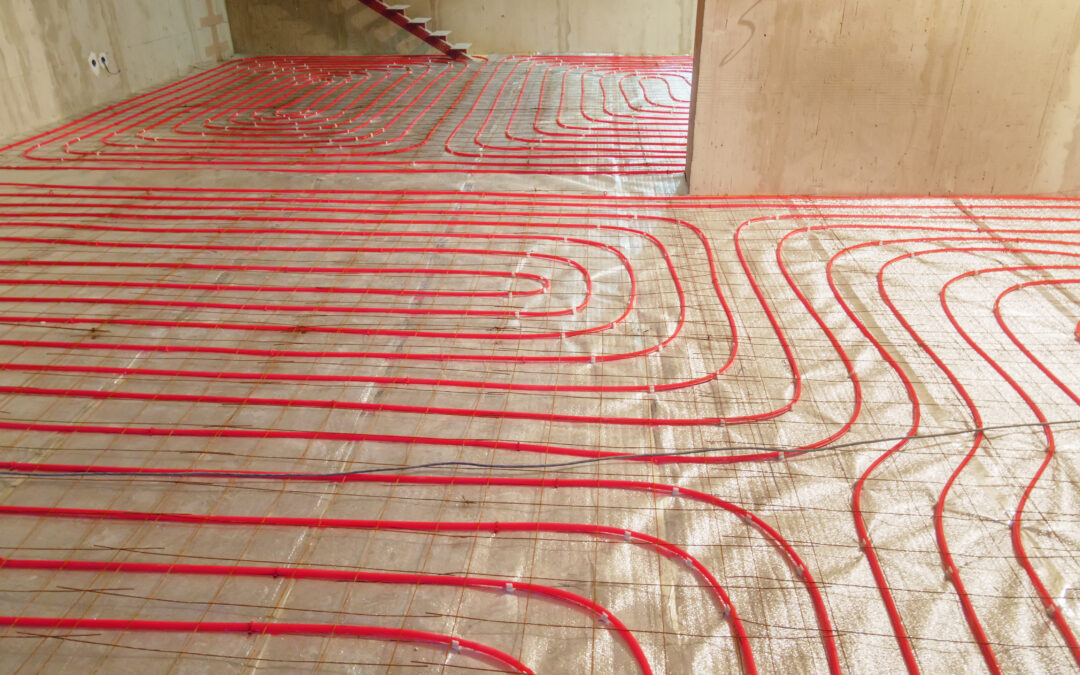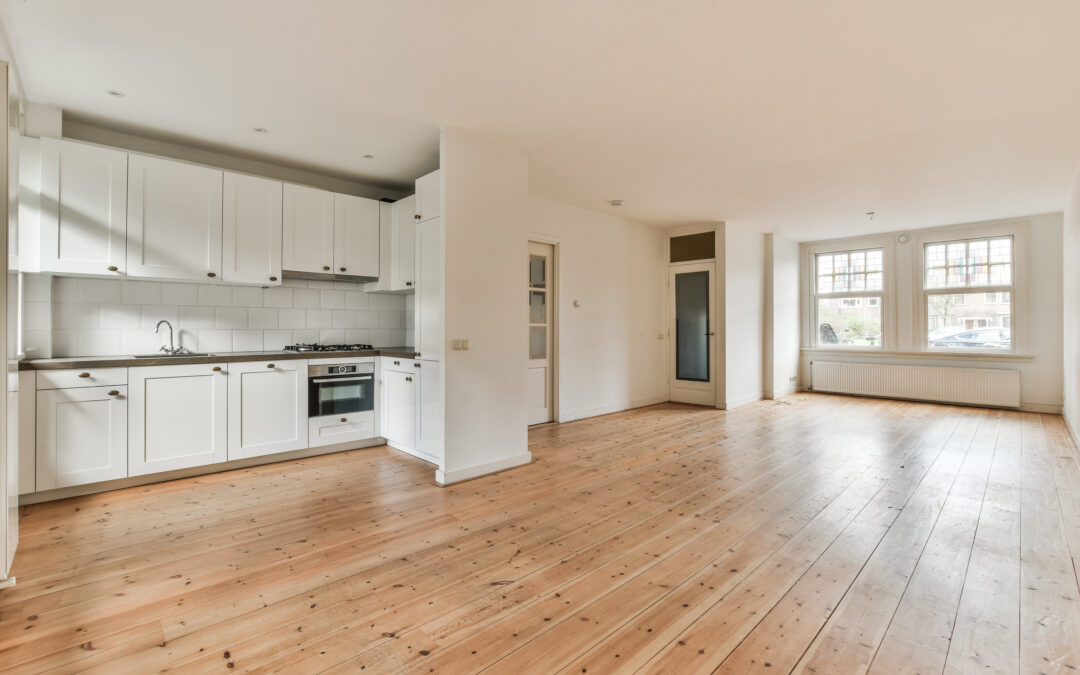Furniture pads are a great way to protect your flooring from damage, including scratches, dents, and other issues. But it’s necessary to choose the right furniture pads to preserve the durability and longevity of your flooring.
In this article, we explain the benefits and importance of furniture pads, the different types of furniture pads available, and how to choose the right furniture pads for your flooring.
What are Furniture Pads?
Furniture pads, also sometimes referred to as felt pads or felt furniture pads, are dense pieces of felt that may have self-adhesive on one side. However, you may also come across furniture pads made from foam or rubber, too.
These pads are designed to stick to your furniture and help protect your flooring from damage caused when moving furniture across the floor. Some pads may only sit between the furniture and floor, rather than adhering to the furniture.
The pads stick to the bottom of the furniture’s legs or feet, creating a barrier between the floor and the furniture. The barrier protects your floors from scratches, scuffs, and other issues when moving furniture across the floor.
The pads usually come in a package that contains various sizes and colours so they blend in with your furniture.
Why are Furniture Pads Important?
One sure way to damage almost any type of flooring is by moving furniture across the floor. This can result in scratches and dents. All it takes is pulling a chair out or rearranging the living room to cause damage.
The pads also reduce the noise caused when moving or rearranging furniture. These are an excellent addition if you live in an apartment or a home where it’s necessary to reduce noise.
Types of Furniture Pads
Choosing the right kind of furniture pad for your home depends on several factors, such as the type of flooring in your home, the weight of the furniture, and your personal preferences.
There are three main types of furniture pads we’ll look at in the following sections.
Felt Pads
Many people choose felt pads to protect their floors. These pads are a great choice for chairs, tables, sofas, and other furniture. Felt furniture pads usually come in a range of sizes and thicknesses, so you can easily customise the protection based on your furniture’s size and weight.
In addition, felt pads are available in a variety of colours, so it’s easy to match them to your furniture or flooring for a more subtle look.
Felt furniture pads have the following advantages:
- Long-lasting: choosing higher quality felt pads ensures they last longer and offer more protection for your floors.
- Easy to apply: most felt pads have an adhesive backing on one side, which attaches to your furniture’s legs.
- Low friction: felt pads cause minimal friction as they slide across the floor, reducing the risk of dents, scratches, and scuffs.
When choosing felt pads, it’s best to opt for high-quality furniture pads. These will last longer and ensure your floors have the best protection available.
Rubber Pads
Next on our list is rubber furniture pads. These are usually made of natural rubber or silicone; they’re very strong and another great choice to ensure your flooring’s protected. These are a great choice for heavy furniture, as they provide a strong grip and keep furniture from sliding.
Rubber furniture pads offer the following benefits:
- Non-slip: rubber pads have excellent traction, ensuring heavy furniture stays put.
- Water-resistant: rubber is naturally water-resistant, making the pads an excellent choice for use in rooms that are wet or moist, including kitchens, bathrooms, and basements.
- Variety: rubber furniture pads are also available in a wide range of shapes, thicknesses, and sizes. They can fit a wide range of furniture types.
When choosing rubber furniture pads, make sure they are designed to use with the type of flooring you have. That way, you can avoid any issues or damage to your floors.
Foam Pads
Foam furniture pads are a lightweight and more cost-effective solution for protecting your flooring from light to moderately-heavy furniture. These pads usually come with adhesive-backed strips or pads. The pads are easy and fast to apply to the legs/feet of your furniture.
The benefits of foam pads include:
- Affordability: foam furniture pads are usually easier on your budget compared to felt or rubber pads.
- Adaptable: the pads are flexible, which makes it easier for them to adapt to furniture that may have irregularly-shaped feet or legs.
- Versatile: foam pads are also more versatile, as they’re easier to cut to the needed size or shape. This is an ideal pad to use on various types of furniture.
Foam pads may not offer the same level of durability as other furniture pads; however, they provide adequate protection for lighter furniture and are an affordable option if you have a tight budget.
How to Choose the Right Furniture Pads
Now you know about the different types of furniture pads, we’ll cover how to choose the right furniture pads for your home.
Size & Shape
The size and shape of the furniture pads are crucial to determining how effective they’ll be. Choose pads that cover the entire surface of the furniture’s legs/feet, so no part is left exposed. Measure the base of your furniture to ensure you choose furniture pads that are of the correct size.
In addition, the pad’s shape is also essential. Be sure to choose pads that fit snugly onto furniture legs/feet without any room for movement (across the pad).
Material
Next, consider the materials the furniture pads are made of, as this also has an impact on how effective the pads will be. The most common materials for furniture pads include:
- Felt
- Rubber
- Cork
Each material brings different benefits. For instance, felt pads are an excellent choice to protect flooring against scratches and work great on hardwood floors. Rubber is best for its non-slip properties and is a better choice for tile or laminate floors.
Be sure to consider the type of floor you have, along with the specific needs for your furniture before choosing the material for your furniture pads.
Adhesion
Some furniture pads do include adhesive backing or other methods of adhesion. Pads can be easily fixed to furniture using self-adhesive backing, nails, screws, or Velcro.
Self-adhesive pads are usually the easiest and fastest to install. However, they usually need to be replaced more often as the adhesive backing wears off over time. Furniture pads that must be screwed or nailed to furniture are another great option; however, they take time to install and may cause damage to certain types of flooring, such as hardwood. Velcro is another choice that’s easy and fast to install, but it may not be as durable as other adhesive methods.
Summing It Up
As you shop for furniture pads, make sure to choose the kind that fits your furniture and offers the best protection for your flooring. Use the factors in this article to find the right pads that keep your furniture and flooring in excellent condition!



